Why You Shouldn’t Overlook Hydraulic Pipe Size
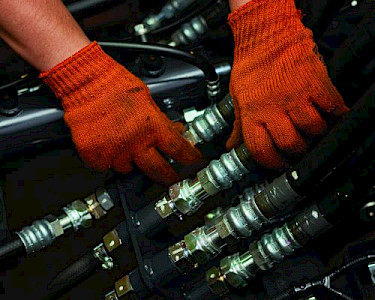 Rarely do I encounter a hydraulic system that has never been modified in some way over the years. Usually, modifications have been made either to make the system run faster or to add some functionality to the machine. Either way, more flow is normally required, which means the pump must be upgraded to a higher displacement. Unfortunately, the increased flow often exceeds the capability of at least some hydraulic lines.
Rarely do I encounter a hydraulic system that has never been modified in some way over the years. Usually, modifications have been made either to make the system run faster or to add some functionality to the machine. Either way, more flow is normally required, which means the pump must be upgraded to a higher displacement. Unfortunately, the increased flow often exceeds the capability of at least some hydraulic lines.
Hydraulic lines that are too small cause excessive heat and turbulence, ultimately resulting in system damage and fluid degradation. Whenever the system is upgraded to increase its flow, it is important to ensure that the current line size is enough to handle the increase.
Heat and turbulence caused by undersized lines is the result of excessive fluid velocity. Fluid velocity is inversely proportional to line size. Any increase in flow will lead to an increase in fluid velocity. This isn’t much of a problem in a line that is straight. Imagine the fluid being on a molecular level. If all the molecules of the hydraulic fluid are travelling parallel to each other, you have a condition known as laminar flow.
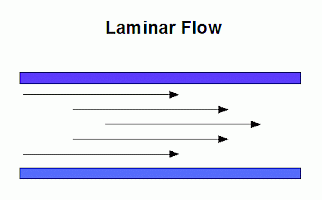
Laminar flow is the most efficient form of flow and the form that all flow seeks to become. Naturally, the fluid in the center of the line will move somewhat more rapidly than the fluid at the edges because of friction with the walls, but the resulting temperature gain will be negligible in a line that is straight. The trouble comes when the fluid reaches a bend in the pipe, as illustrated to the right.
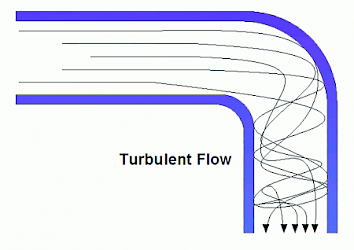
The molecules then begin colliding with the sides of the pipe, causing the laminar flow to become a turbulent flow, and heat is generated. It usually is quite easy to tell when the line diameter is too small by measuring the bends in the pipe with a thermal imaging camera. Hot spots at the bends are a dead giveaway.
The schedule of the pipe influences turbulence as well. Most systems require schedule 40 pipe for suction and return lines but schedule 80 or 160 pipes for pressure lines, depending on the system pressure. The higher schedule pipe has thicker walls to contain the force of the higher pressure, thus the higher schedule pipe has a smaller inside diameter. Although the pipe may look the same on the outside, the fluid velocity will be higher through a greater schedule pipe.
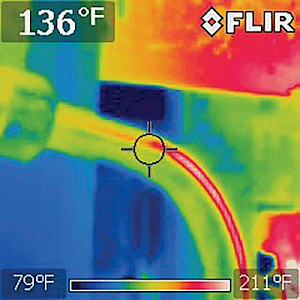
For most systems, turbulence can be kept to an acceptable level using the following guidelines:
Pump Suction Lines
Most hydraulic pumps have a suction line that is larger than the pressure line. This is because the inlet velocity must be very low to allow fluid to freely flow into the pump. Any restriction of inlet flow will cause the pump to cavitate and ultimately destroy itself. A pipe, tubing or hose chart can be used to determine the proper diameter pipe. These charts should be available from the manufacturer. Since a schedule 40 pipe would be required for a suction line, use the sample schedule 40 pipe chart in Table 1 to size the line.

In this example, let’s assume the system pump has been upgraded to one that delivers 30 gallons per minute (GPM). Since you do not want to exceed 5 feet per second, look down the 5 feet per second column to find the flow rate. Notice that a 1¼-inch pipe can handle up to 23.4 GPM without exceeding a fluid velocity of 5 feet per second, while a 1½-inch pipe can withstand 31.9 GPM. Whenever your flow rate is between two sizes, always pick the next larger pipe size, not the next smaller one. Therefore, if the existing line were smaller, you would install a 1½-inch suction line.
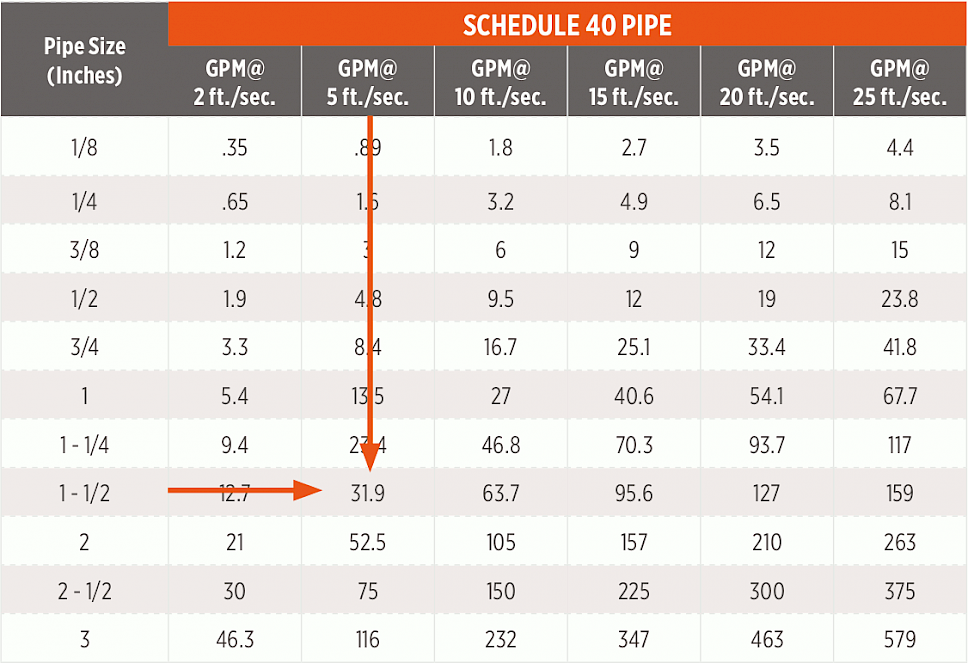
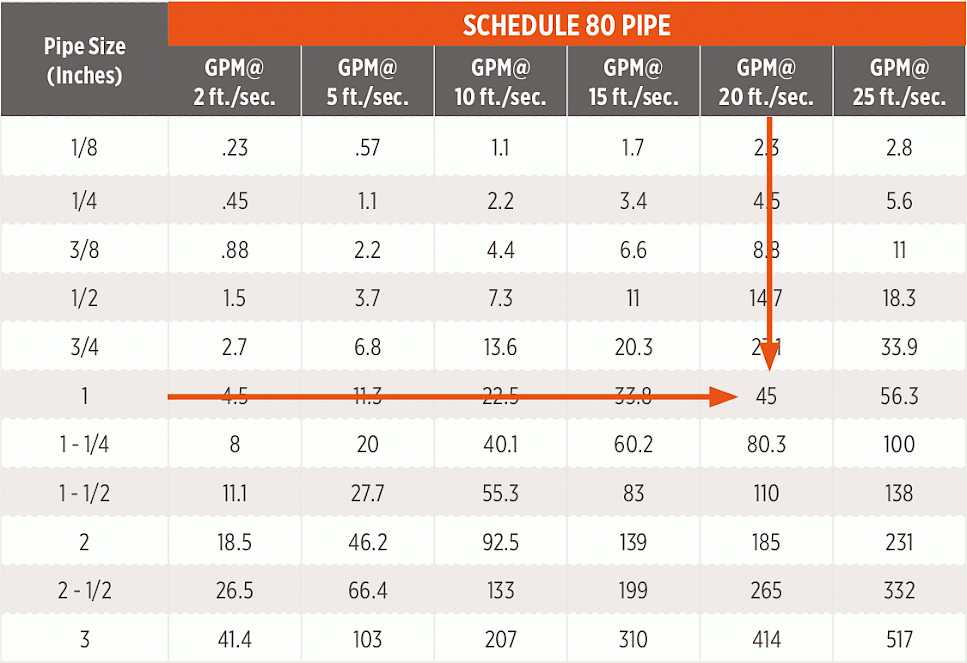
Table 2. Another example of a schedule 40 pipe chart.

Return Lines
Since you can also use schedule 40 pipe for a return line, you can check the schedule 40 chart again to determine the proper pipe size.
By looking in the 15 feet per second column of Table 2, you find that a 1-inch return line can deliver up to 40.6 GPM without exceeding 15 feet per second fluid velocity. You, therefore, would choose at least a 1-inch schedule 40 return line.
Pressure Lines
Most hydraulic systems operate at less than 3,000 pounds per square inch (psi) and can use schedule 80 pipe for pressure lines. However, some systems operate at much higher pressures and require heavier piping. Usually, systems that operate at more than 3,000 psi have very rigid design specifications and seldom get modified much. The designer should pay close attention to pipe size and specify the number of allowable bends as well as the necessary radius of any bends. Often such machines are designed to allow for fluid velocities of 30 feet per second or more.
If the operating pressure is less than 3,000 psi, you may use a schedule 80 pipe chart to size the pipe. By checking the 20 feet per second column of Table 3, you can see that a 1-inch schedule 80 pipe can deliver 45 GPM without exceeding a fluid velocity of 20 feet per second.
Always Check Your Lines
Don’t ignore the size of your hydraulic pipes. Size does matter. Before upgrading your systems, always check to be sure the lines are the right size. Also, if excessive heat or turbulence are suspected, use a thermal imager to look for potential hot spots.
